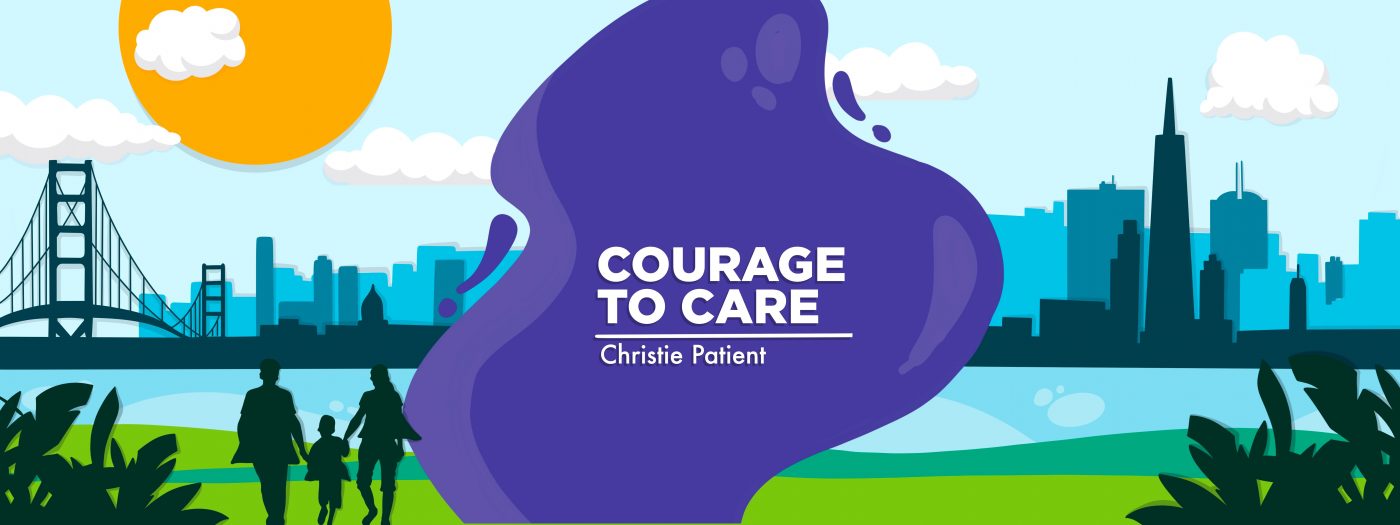How to Make Your Event Safer for Vulnerable Guests
Written by |

As soon as my mom, Holly, was out of the hospital following her bilateral lung transplant, our family began efforts to protect her immunocompromised body. Before she even got the call about available donor lungs, the University of California, San Francisco lung transplant team had educated my family about how to keep my mom safe. We learned about viruses, bacteria, and molds, including which ones were serious threats, where to find them, and how to protect her from them.
Frequent hand-washing and mask-wearing were part of our routine for a full year before the COVID-19 pandemic started. During that year, my mom’s health came first whenever we planned gatherings or outings. Now, our risk assessment and preparations are even more stringent.
When the pandemic hit, my husband, Jonny, and I canceled our wedding reception again. After trying to plan the party for four tumultuous years, I wondered if we would ever be able to celebrate with our family and friends.
We have spent most of this year waiting and watching to see if the available COVID-19 vaccines can get the pandemic under control. When daily vaccine doses were at an all-time high in April, and new cases and deaths were at an all-time low, we decided to try again. We set the date and cautiously began planning.
By mid-June, the state of California, where we are having the party, reopened with no restrictions on small events. Trusting the public health department, we dove into planning for real and began to brainstorm about how to make the event safe for our guests at higher risk for COVID-19 complications.
Navigating the COVID-19 element of wedding planning has involved lots of uncomfortable conversations and sickening amounts of anxiety for me. Considering my mom’s health status, I have been tempted to require proof of vaccination to attend. But while I don’t want vulnerable guests to feel endangered or excluded, I also don’t want to refuse unvaccinated guests or make them feel incriminated. This moment in history is challenging and complex, so how do we make our event inclusive and safer for everyone?
Short of requiring proof of vaccination, we have done all we can to achieve our goals. Hopefully our efforts will help others navigate their own planning process. Following is the strategy we followed:
Get data from reputable news sources and follow CDC guidelines
Knowing the risks is the first step in planning a safe event. Following public health guidance is important, and you have to be willing to change plans as the U.S. Centers for Disease Control and Prevention (CDC) revises guidelines. I track COVID-19 data reported by The New York Times. I also follow infectious disease specialists like Dr. Laurel Bristow, who interprets and communicates ever-changing COVID-19 news to the public.
Plan safe distancing into the event
We planned our event entirely outdoors and reduced the guest list. Since we’ve had to sacrifice invitations for people we know and love, we are not allowing additional guests. And since school-aged children are significant vectors for respiratory illnesses, and they can’t yet be vaccinated for COVID-19, invitations are for adults only.
For seated portions of the event, a seating chart could help protect vulnerable guests. Since our party is more casual, we are not assigning seats. However, we will ask our vulnerable guests if they’d like us to reserve a seat among guests who have disclosed that they are vaccinated. For our vow renewal ceremony, we are planning to arrange the seating with social distancing in mind.
Make rules easy to follow
We stated on the invitations that masks are required for unvaccinated folks. To help people understand why we are enforcing these rules, even as the country appears to be reopening, my mom gave me permission to disclose her health status on our event website.
To ensure that people abide by our mask rule, we will have individually wrapped, single-use surgical masks and N95 masks available. We will also have signage explaining that we are following airplane rules for unvaccinated guests, which ask them to always wear a mask unless eating or drinking.
Of course, we will have abundant hand sanitizer available. And as much as I hate wasting paper, we have purchased 200 single-use hand towels for the restrooms.
Food safety
A precaution that we would have followed regardless of COVID-19 is safe food handling and preparation. Having a professionally prepared, plated meal is the safest option. Buffet service dramatically increases the risk of contaminants that could harm immunocompromised guests, even if the food is catered. Potluck meals are the riskiest choice.
In our case, we are having a professional chef duo cater the event, but we are keeping it casual with a buffet-style barbecue dinner. The chefs are trained and certified in safe food preparation, and we will ask our immune-compromised and elderly guests to serve themselves before the rest of the guests.
***
Note: Pulmonary Fibrosis News is strictly a news and information website about the disease. It does not provide medical advice, diagnosis, or treatment. This content is not intended to be a substitute for professional medical advice, diagnosis, or treatment. Always seek the advice of your physician or other qualified health provider with any questions you may have regarding a medical condition. Never disregard professional medical advice or delay in seeking it because of something you have read on this website. The opinions expressed in this column are not those of Pulmonary Fibrosis News or its parent company, Bionews Services, and are intended to spark discussion about issues pertaining to pulmonary fibrosis.








Diana
Well done! Thank you for loving your mom as much as you do.❤️ Enjoy your event and best wishes for a wonderful lifetime together.
Christie Patient
Thanks Diana. Her safety is my primary concern. She got me to adulthood safely, it's my job to protect her now. All in love.